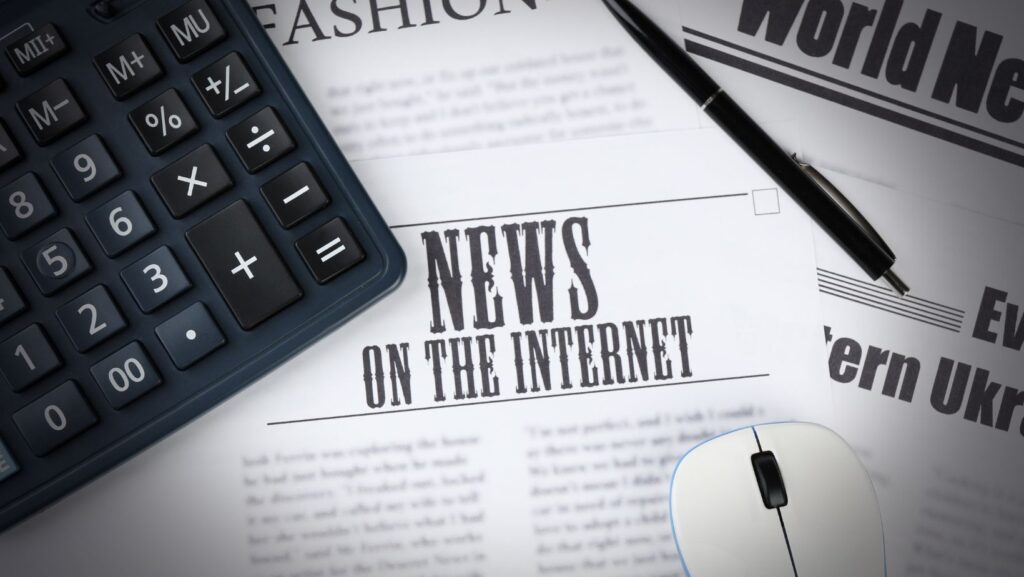Think of your logo as the face of your brand. It’s what people recognize and remember. But like everything in the fast-paced business world, logos aren’t meant to last forever without a little touch-up. Sometimes, to stay relevant and impactful, your logo needs a makeover. But when exactly should you consider redesigning your logo, and why is it so crucial? Let’s dive into the scenarios that might prompt a brand refresh and explore why keeping your logo updated is key to maintaining its charm and effectiveness.
Recognizing the Need for Redesign
Business Growth and Market Dynamics: As your business evolves, so should your logo. Growth phases or changes in market dynamics often mean your current logo might not reflect who you are anymore. Whether scaling up, shifting focus, or entering new markets, your logo should keep up with your business’s pace and direction. It’s all about ensuring your logo grows with you, not against you.
New Products or Services Launching new products or services? This might be the perfect time to rethink your logo. A fresh look can signal to your customers that your brand is experiencing new and exciting things. It’s like putting on a new outfit that says, “Hey, check this out!”
Shifts in Target Audience or Brand Values If your target audience has changed significantly or if your brand’s core values have shifted, your logo should reflect that. It’s about staying relevant and resonant with the people you want to reach. A logo that grows and adapts to your brand values and audience can keep your brand strong and connected.
Addressing an Outdated Logo or Negative Associations Sometimes, logos just get old, or worse, they end up associated with something negative. It might be time for a change if your logo feels stuck in the past or has picked up some not-so-great vibes. Keeping your logo fresh and free of negative associations is crucial for maintaining a positive brand image.
Key Considerations Before Starting the Redesign
Evaluating the Current Logo’s Effectiveness Before you dive into a redesign, take a good look at what you’ve got. What aspects of your logo are hitting the mark, and which ones are missing? Use surveys, A/B testing, or even social media feedback to dig into what works and what doesn’t. Additionally, consider the efficiency and time savings by using a logo editor like Adobe Express, which offers a range of customizable templates and tools that streamline the design process. Understanding your logo’s strengths and weaknesses can help you make informed redesign decisions.
Emotional Connection with the Audience Your logo isn’t just a pretty design; it’s a connection point with your audience. Keeping or adapting elements that resonate emotionally with your audience is vital. If your logo has a certain color or symbol that your customers are deeply attached to, think twice before you do away with it. Sometimes, a subtle update can refresh the look while keeping those key emotional ties intact.
Aligning Redesign with Brand Values, Mission, and Future Goals Make sure your new logo isn’t just about looking good—it should embody where your brand stands and where it’s headed. Align the Redesign with your brand’s core values, mission, and future goals. This alignment ensures that your logo communicates what you stand for as clearly and powerfully as possible.
Market Analysis and Competitor Differentiation Don’t redesign in a bubble. Look around you—what are your competitors doing? Conduct thorough market research to understand trends and customer preferences. Your redesigned logo should make you stand out in the crowd, not blend in. Ensuring your logo is distinctive and appealing to your target market is key.
Setting Clear Objectives
Defining Goals for the New Logo: What do you want to achieve with your new logo? Increased brand recognition, a modern look, alignment with a new brand narrative? Define clear, achievable goals. This clarity will guide the redesign process and help you measure its success later on.
Ensuring Objectives Align with Overall Brand Strategy Your logo redesign isn’t a standalone project—it’s part of your broader brand strategy. Make sure the objectives for the new logo complement your overall brand goals. This coherence ensures that your logo supports your brand’s long-term vision and strategy, making it a true asset in your marketing toolkit.
Involving Stakeholders and Gathering Feedback
Stakeholder Involvement When it comes to redesigning your logo, it’s not just a job for the design team. Involving internal teams and key stakeholders early in the process can provide invaluable insights. These people know your brand inside and out, and their input can ensure the new logo truly represents the brand. Plus, involving them early helps build consensus and support for the Redesign, making the transition smoother for everyone.
Methods for Collecting Feedback: How do you know if your new logo will resonate? Ask! Utilize surveys, focus groups, and social media polls to gather Feedback from your target audience. This direct input can reveal what’s working and what’s not, giving you a clearer picture of how your logo is perceived. It’s about tapping into the collective voice of those who will live with the logo daily.
Incorporating Feedback into the Design Process Once you’ve gathered all this Feedback, don’t just sit on it—use it to refine your logo concepts. This step is crucial for fine-tuning your design and ensuring it looks good and connects effectively with your audience. Feedback is a goldmine for designers, providing the insights needed to tweak and perfect the logo.
Assessing What to Modify and What to Preserve
Elements to Retain for Brand Recognition: What makes your logo recognizable? Whether it’s a specific color, font, or symbol, identify these iconic elements and think carefully about preserving them. Keeping certain key elements can maintain brand continuity and help your audience transition smoothly to the new design. Sometimes, a successful redesign is more about evolution than revolution.
Determining Necessary Changes for Modernization, Every brand needs to stay fresh and relevant. Determine which elements of your logo are dated and need a modern touch. This could mean simplifying complex designs, updating fonts, or introducing new, contemporary colors. The goal is to ensure your logo meets current trends while retaining its core identity.
Exploration and Concept Development
Research and Inspiration: Kickstart your logo redesign with a healthy dose of inspiration. Look at successful logo redesigns and gather creative input from a variety of sources. This can include everything from contemporary art to digital design trends to the natural shapes and colors that reflect your brand’s values and audience preferences. This phase is about casting a wide net and seeing what sparks creativity, setting the stage for innovative ideas that still tie back to your brand’s essence.

Sketching and Conceptualizing New Designs Now, bring those ideas to life. Begin the sketching and conceptualizing phase, where your design team can let their creativity flow. This initial process involves generating concepts that translate your research and inspiration into tangible designs. The creative heart of your redesign effort is where possibilities begin to take shape.
Balancing Creativity with Strategic Goals While creativity is vital, your new logo must align with your strategic brand objectives and identity. It’s a balancing act between innovative design and strategic alignment, ensuring that each concept looks good and embodies the brand’s mission and values.
Design Refinement and Finalization
Converting Concepts to Digital Formats Transition your best concepts from paper sketches to digital formats. This step is crucial as it allows you to manipulate designs more precisely and see how they look in the formats most consumers will experience them.
Iterative Design Process with Continuous Feedback Refine your designs through an iterative process, incorporating continuous Feedback from stakeholders and potential consumers. This feedback loop is essential for tweaking and perfecting the logo, ensuring it resonates well with the audience.
Testing Logo Versatility Across Various Media A great logo performs well across various platforms. Test your logo’s versatility to ensure it’s effective in different sizes and applications, from giant billboards to the small screens of mobile devices. This adaptability is crucial to maintain brand consistency across all media.
Implementation and Launch
Planning the Rollout of the New Logo Strategize the introduction of your new logo carefully. Plan the rollout to ensure a smooth transition, considering the best platforms and times to unveil your refreshed brand identity.
 Communicating the Redesign to the Audience: Keep your audience in the loop. Communicate the reasons behind the Redesign, explaining how the new logo better represents the brand’s evolving direction. This transparency can help build acceptance and enthusiasm around the change.
Communicating the Redesign to the Audience: Keep your audience in the loop. Communicate the reasons behind the Redesign, explaining how the new logo better represents the brand’s evolving direction. This transparency can help build acceptance and enthusiasm around the change.
Monitoring Public Reception and Making Adjustments Once the new logo is live, monitor its reception. Based on public feedback, be prepared to make necessary adjustments to fine-tune any elements that may not be resonating as expected.
Case Studies
Examples of Successful Logo Redesigns Let’s look at some champions of the logo redesign game. BMW refined its logo to a more minimalist and digital-friendly design, shedding the black ring for a transparent one, signaling openness and clarity in the era of electric vehicles. Google Maps updated its logo from a classic map pin to a sleeker, rounded version, symbolizing its evolution from a simple navigation tool to a comprehensive travel companion. Microsoft Edge also transformed, adopting a more fluid and modern look that reflects its cutting-edge browser capabilities.
Lessons Learned and Best Practices from These Examples These redesigns teach us valuable lessons: simplicity works wonders, align changes with technological advancements, and ensure your logo reflects current and future brand trajectories. They show that a well-thought-out redesign can rejuvenate your brand, making it relevant in changing times while maintaining its core identity.
Bottomline
In conclusion, a logo redesign is not merely an aesthetic upgrade but a strategic move essential for keeping your brand relevant and resonant in a dynamic market. As your company grows, introduces new offerings, or aims to connect with a changing audience, refreshing your logo can significantly enhance your brand’s perception and effectiveness. Remember, a successful redesign requires a thoughtful balance between preserving familiar elements and introducing innovative changes that reflect current trends and future goals. By carefully considering Feedback, aligning the Redesign with your brand values, and strategically rolling out the new logo, you can ensure a smooth transition that energizes your brand and solidifies its place in the competitive landscape.


